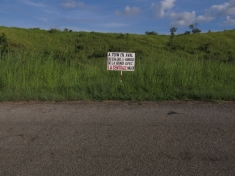Why the Rush to Build Inga 3?
The proposed Inga 3 Dam project has been at the epicenter of all energy discussions pertaining to Africa in the past three years. Speculation and rumors abound, and secrecy has surrounded the project’s status. Then, late last year, the government of the DRC announced that the Inga 3 project is at a very advanced stage. This news comes not long before the end of President Joseph Kabila's official term in November 2016.
Although the government has missed deadlines many times before, we are told that this time South Africa and the DRC are determined to ensure that the project moves ahead.
Kabila’s government seems to be in a hurry to build Inga 3, and anxious to select the consortium – a private partner that will help mobilize the funds, build the dam, and manage it. Yet no Social and Environmental Impact Assessment (SEIA) studies have been conducted. So what’s the hurry?
The History
In 2013, the DRC announced its revised plans to build Inga 3. South Africa emerged as the principal purchaser of the power, and the World Bank group and the African Development Bank became strong sponsors of the project. They put together a package of USD$103 million to support technical studies and project preparation.
The government has gone on to hit several important milestones.
First, they established a management structure for the Inga 3 project in October 2013, with the formation of a coordination unit called “Cellule de Gestion d’Inga 3” (CGI3). CGI3 was established for a short-term assignment to oversee the preparation and planning of the technical studies and selection of project partners. CGI3 was part of an interim institutional arrangement set up to continue the preparation of Inga 3 until the Agence pour le Developpement et la Promotion du Projet Grand Inga (ADPI) was set up.
In October 2015, through a ministerial decree, ADPI was established under the leadership of ex-Energy Minister Bruno Kapandji. After meeting two major milestones, DRC’s government may be closer to the project’s realization. But still investors remain at bay, with no firm commitments made.
Where’s the Money?
Without investment, however, actors have come and gone. The South African government remains an active player, and it’s done its fair share of lobbying to prove that it’s the only credible buyer of power from the Inga 3.
But in 2015, new players emerged. In September 2015, Congolese, South African and Chinese heads of states met in Bejing to discuss Inga 3’s construction. China’s Three Gorges, the China Development Bank and other Chinese companies expressed their interest in getting involved in the Inga 3 project.
China’s interest in financing the project comes at a time when DRC is under pressure from South Africa to kick-start the project. As a result, the government announced that the project could start by the end of 2016. This runs contrary to the World Bank’s estimates, which put the start date after 2017.
Putting the Cart Before the Horse
The DRC seems to be going about things backwards. While DRC’s ministers and officials are running around looking for financing, the government has yet to undertake any environmental or social impact studies. These are a prerequisite by Congolese law before commencing any huge project.
Before it was dissolved, the CGI3 worked to select a group of consultants to perform the SEIA studies. It seems that these efforts never materialized, and the new government agency, ADPI, has not disclosed any information on the progress of that exercise.
Over and above the SEIA studies, Inga 3’s feasibility study, completed in 2013, is now outdated and requires additional work and updates. For example, according to an official of CGI3, the old prefeasibility study was designed for a 3500 MW power plant; the current plans call for a 4800 MW power plant. Additional studies will assess issues pertaining to sedimentation, tariffs and cumulative impacts, among other things. All these studies are absolutely crucial before any such huge project can commence.
Even in the most hopeful scenario, it’s impossible to start and complete these studies in less than a year. Does the DRC government intend to move ahead before the SEIA and these other studies are completed? According to the environmental law passed in 2011, a construction permit can only be granted once the SEIA studies are completed.
Flushing Money Down the Drain
If the decision to build the dam has been made and construction has commenced, then what is the purpose of the SEIA? Isn’t it therefore a futile exercise – and an expensive one, for that matter?
According to a recent article published in GlobalResearch, the DRC loses $15 billion per year to fraud, which is close to the $14 billion price tag of Inga 3. If this bit of information doesn’t push the government to adopt austerity measures against corruption, will they care if an adequate SEIA is conducted? This calls into question DRC government’s motive in building Inga 3. Are they interested in the wellbeing of citizens who will be affected, directly or indirectly? Or is something else driving this effort?
As a citizen of DRC, I have a personal interest in what happens with Inga 3. This proposed project is likely to disadvantage the ordinary DRC citizen like me by irreversibly damaging the environment and robbing future generations of funds for education, adequate health care and economic opportunities. I fear that Inga 3 will change the political landscape in DRC and negatively influence energy distribution and development in the country and the region. That’s why we continue to advocate against this project.




